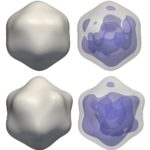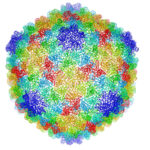A team at Berkeley Lab are using innovative computational methods to enable new X-ray science. “The creation of XFEL facilities, including the Linac Coherent Light Source (LCLS) and the European X-FEL, have created opportunities for conducting new experiments which can overcome the limitations of traditional crystallography.”
Sowing Seeds of Quantum Computation at Berkeley Lab
“Berkeley Lab’s tradition of team science, as well as its proximity to UC Berkeley and Silicon Valley, makes it an ideal place to work on quantum computing end-to-end,” says Jonathan Carter, Deputy Director of Berkeley Lab Computing Sciences. “We have physicists and chemists at the lab who are studying the fundamental science of quantum mechanics, engineers to design and fabricate quantum processors, as well as computer scientists and mathematicians to ensure that the hardware will be able to effectively compute DOE science.”
Podcast: Mapping DNA at Near-Atomic Resolution with Cryo-EM
In this podcast, Berkeley Lab’s Eva Nogales describes how her team is using a new imaging technology that is yielding remarkably detailed 3-D models of complex biomolecules critical to DNA function. Using cryo-electron microscopy (cryo-EM), Nogales and her colleagues have resolved the structure at near-atomic resolutions of a human transcription factor used in gene expression and DNA repair.
Boosting Manycore Code Optimization Efforts with Roofline Technology
A software toolkit developed at Berkeley Lab to better understand supercomputer performance is now being used to boost application performance for researchers running codes at NERSC and other supercomputing facilities. “Since its initial development, what is now known as the Empirical Roofline Toolkit (ERT) has benefitted from contributions by several Berkeley Lab staff. Along the way, HPC users who write scientific applications for manycore systems have been able to apply the toolkit to their applications and see how changing parameters of their code can improve performance.”
Berkeley Lab Algorithm Boosts Resolution on Cryo–EM
Berkeley Lab researchers have developed the first 3-D atomic-scale model of P22 virus that identifies the protein interactions crucial for its stability. “This is a great example of how to exploit electron microscopy technology and combine it with new computational methods to determine a bacteriophage’s structure,” said Paul Adams, Berkeley Lab’s Molecular Biophysics & Integrated Bioimaging division director and a co-author of the paper. “We developed the algorithms—the computational code—to optimize the atomic model so that it best fit the experimental data.”








